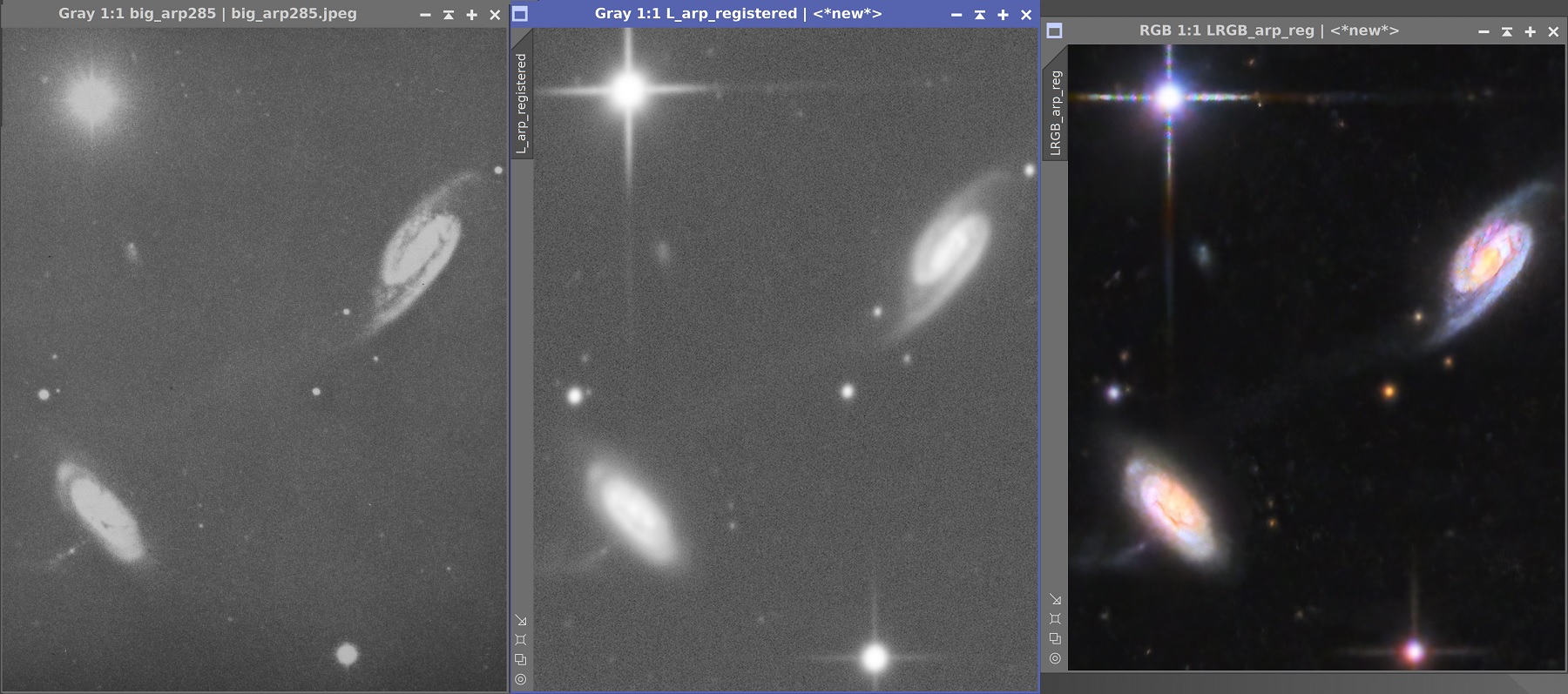Telescope: Luminance: Astrograph 400 f/4 Newton. Paramount ME. ASI 6200 MM cmos. Chroma Ha & Oiii filters.
Color: Astrograph 250 f/4 Newton. Paramount ME. ATIK 16200 ccd. Chroma RGB filters
Exposures: L : 206 x 10' ( 34:20 )
R: 18 x 5' ( 1:30 )
G: 18 x 5' ( 1:30 )
B: 18 x 5' ( 1:30 )
Total: 38:50 hour
Resolution: 0.42"/pixel. Luminance FWHM after integration: 2.3"
Date: April 2021 - Februaryr 2023
Site: Luminance: Sagan Observatory Las Rozas (Spain) - mag 4.5 suburban skies -
Color: La Sagra Observatory Puebla de Don Fadrique (Spain) - mag 7 professional observatory skies -
Bias, Dark & Flat calibration
Local Normalization
DBE
SpectroPhotometric Color Calibration
BlurXTerminator
Starnetv2 for star masks
Histogram stretching
Color saturation adjustments
Morphological Transformation stars reduction
LocalHistogramEqualization
A brief reflexion about the advances in astrophotography in the last 60 years:
Halton Arp took the images for his catalog, Atlas of peculiar galaxies in the 1960s using the 200-inch (5 meter) Hale telescope on Mount Palomar, then the largest telescope in the world. The catalog photographs were made with with various plate and filter combinations, among them on blue-sensitive (Kodak 103a-J) plates, as it is the case for Arp 285 image, with a exposing time of about 1:00 hour.
Bottom left shows the original image of Arp 285 as it appears in Halton Arp's original catalog . In the center is the luminance image obtained by the N400 (16-inch) astrograph (34:20 hour of total integration time from the Sagan Observatory's severely light polluted skies), only with a histogram adjustment to equalize its brightness with that of Arp's catalog one and, on the right, the fully processed image, all of them at the same scale and resolution.
Well, draw your own conclusions about astrophotography improvement since 1960s.
